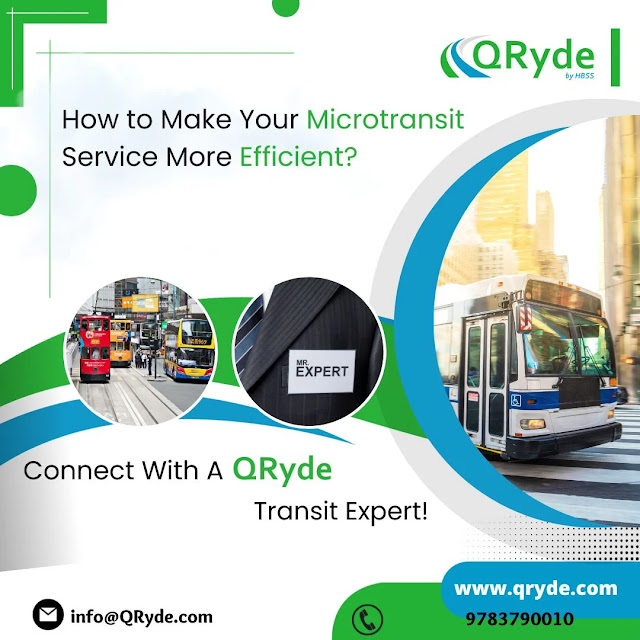How Microtransit Software Can Transform Charlotte’s Public Transit Future
Charlotte, North Carolina, is one of the fastest-growing metro areas in the United States — but its public transportation system hasn’t kept pace. The city is experiencing what planners call a “transit desert,” where those without personal vehicles find it nearly impossible to access jobs, healthcare, or even grocery stores. Since 2014, the Charlotte Area Transit System (CATS) has lost 75% of its bus ridership. In an era of rapid urban expansion, this is not just a transportation issue — it’s an equity crisis.
To reverse this trend, Charlotte must rethink its approach to public mobility. And that’s where microtransit software comes in.
What Is Microtransit — and Why Now?
Microtransit is a flexible, demand-responsive transportation model that uses small vehicles to connect riders from their neighborhoods to key transit or community hubs. Powered by advanced paratransit scheduling software and ride scheduling software, microtransit fills in the gaps left by traditional fixed-route services.
Unlike traditional buses that operate on static schedules and routes, microtransit leverages real-time trip data and smart routing to respond dynamically to rider needs. Riders can book trips via mobile apps, call centers, or web portals — reducing wait times and providing a more personalized transit experience.
In cities like Wilmington, NC, microtransit is already proving its value. The RideMICRO program launched in 2022 has seen an 800% increase in ridership, now accounting for nearly 10% of the metro system’s annual trips. Charlotte has taken early steps in this direction with its own pilot near the LYNX Blue Line. But for real impact, the program needs robust investment, expansion, and the right technology partner.
Technology That Makes It Work
Implementing effective microtransit depends on more than just vans and drivers — it demands a technology backbone that can manage scheduling, dispatching, routing, payments, and reporting across a diverse service area. QRyde’s paratransit routing software, microtransit software, and public transit software platforms are purpose-built to do just that.
Using QRyde’s global scheduling engine, agencies like CATS can:
-
Auto-optimize routes in real time to reduce detours and deadheading.
-
Schedule rides in advance or accommodate real-time will-call trips.
-
Coordinate NEMT fleet providers for medical appointments.
-
Match rider needs with the right vehicle type (e.g., wheelchair-accessible).
-
Ensure equitable access through flexible service zones and smart coverage maps.
-
Track and analyze performance with detailed reports.
This tech-enabled, data-driven approach empowers city transit agencies to serve riders more efficiently, reduce per-trip costs, and improve the rider experience — especially in historically underserved areas.
The Equity Argument
Charlotte’s current “hub-and-spoke” transit model centers on Uptown, a higher-income area with better access to services. Outlying neighborhoods, particularly those with larger Black and low-income populations like Biddleville and Greenville, often lack direct transit connections. This is no accident — it’s a legacy of redlining and urban renewal policies that dismantled streetcar networks in marginalized communities.
Microtransit helps fix this. By deploying public transit scheduling software and smart dispatch tools, cities can bring transit access to the doorsteps of those who need it most — without waiting years for new fixed-route infrastructure.
Cost vs. Value
Critics argue microtransit is expensive. But while a fully operational system may require federal and local subsidies, the economic returns are undeniable. According to the American Public Transportation Association, every $1 invested in public transit generates $4 in economic returns. In Los Angeles, a microtransit pilot increased job access by 11% — a direct benefit to working families and employers alike.
For a growing city like Charlotte, the cost of not investing in innovative solutions like microtransit scheduling software may be far greater — missed economic growth, continued segregation by mobility, and rising social inequities.
The Way Forward
Microtransit is more than a transportation trend — it’s a foundational element of the future mobility ecosystem. With the right tools, like QRyde’s transportation scheduling software and paratransit dispatch software, cities like Charlotte can meet riders where they are, break down historical barriers, and create truly inclusive public transit networks.
As Charlotte develops its 2030 Transit Plan, microtransit must play a central role. It’s flexible, fast to implement, and proven to increase ridership — all while laying the groundwork for a more resilient and equitable transportation future.
QRyde is proud to support cities, agencies, and nonprofits nationwide in building smarter, more equitable transit systems through technology.



Comments
Post a Comment